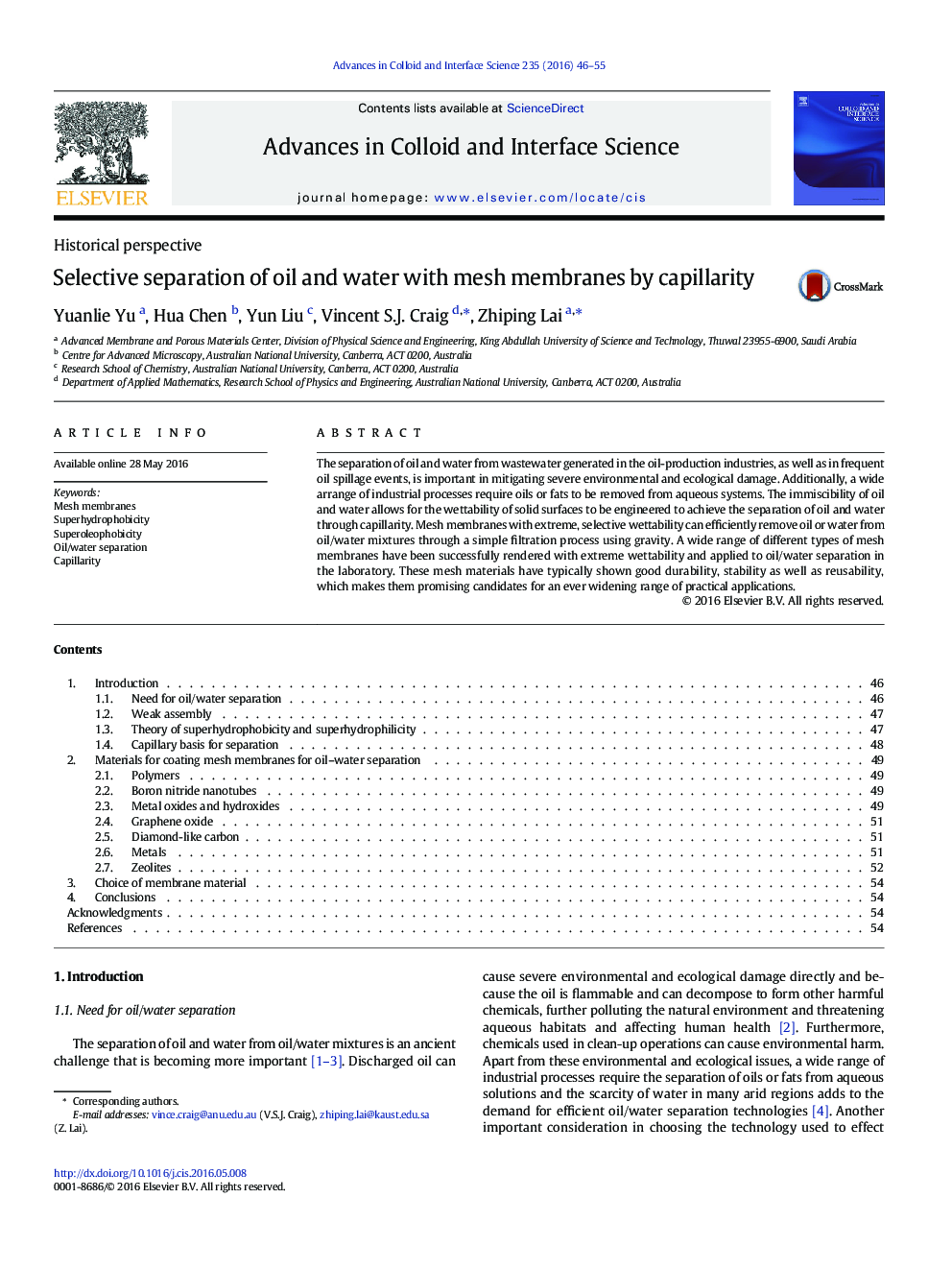| Article ID | Journal | Published Year | Pages | File Type |
|---|---|---|---|---|
| 590539 | Advances in Colloid and Interface Science | 2016 | 10 Pages |
•Studies of mesh membranes for oil-water separations is reviewed when this technology is finding real world applications•A simple expression for the breakthrough pressure for a 2D membrane is derived•The variety of materials employed for mesh membranes are reviewed and the benefits of each material discussed•The need for careful laboratory studies on the effect of contaminants on membrane performance is highlighted
The separation of oil and water from wastewater generated in the oil-production industries, as well as in frequent oil spillage events, is important in mitigating severe environmental and ecological damage. Additionally, a wide arrange of industrial processes require oils or fats to be removed from aqueous systems. The immiscibility of oil and water allows for the wettability of solid surfaces to be engineered to achieve the separation of oil and water through capillarity. Mesh membranes with extreme, selective wettability can efficiently remove oil or water from oil/water mixtures through a simple filtration process using gravity. A wide range of different types of mesh membranes have been successfully rendered with extreme wettability and applied to oil/water separation in the laboratory. These mesh materials have typically shown good durability, stability as well as reusability, which makes them promising candidates for an ever widening range of practical applications.
Graphical abstractFigure optionsDownload full-size imageDownload as PowerPoint slide
